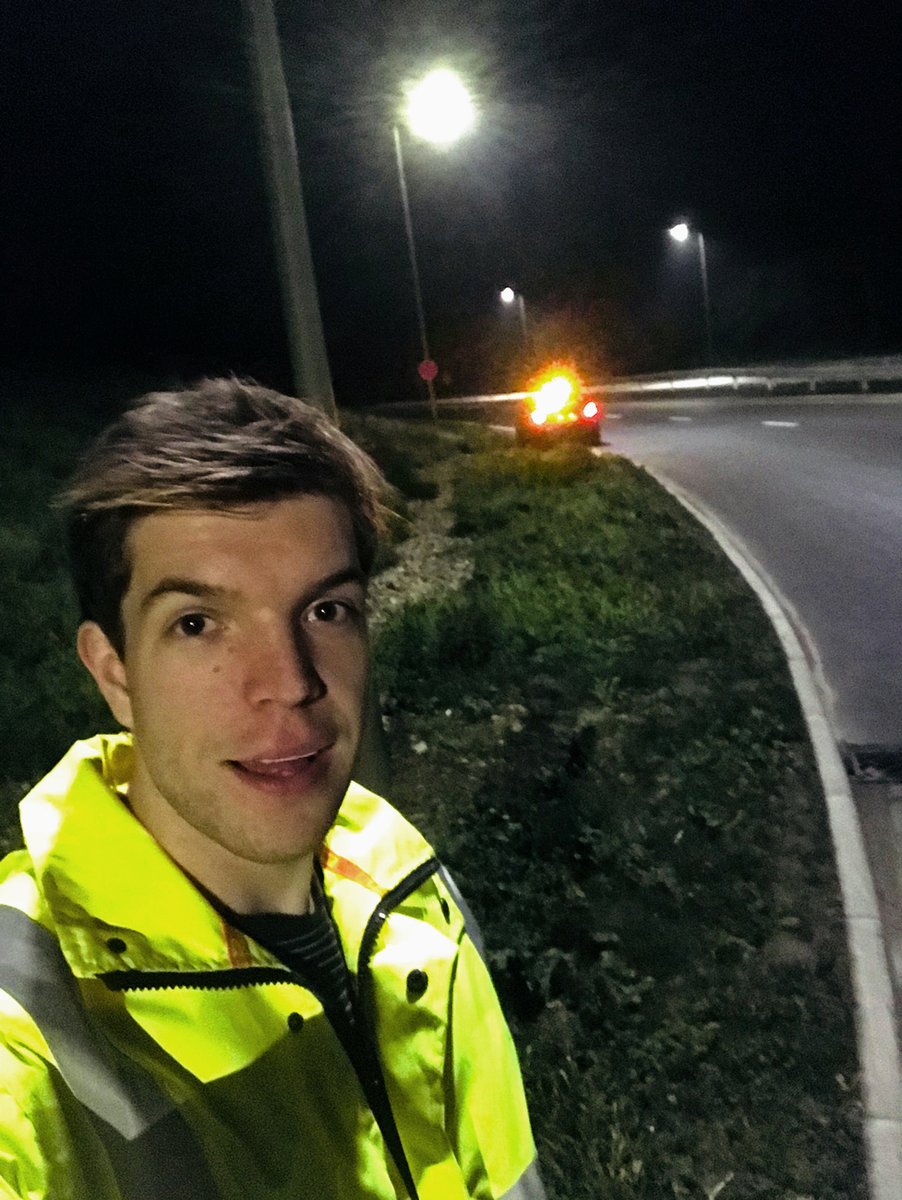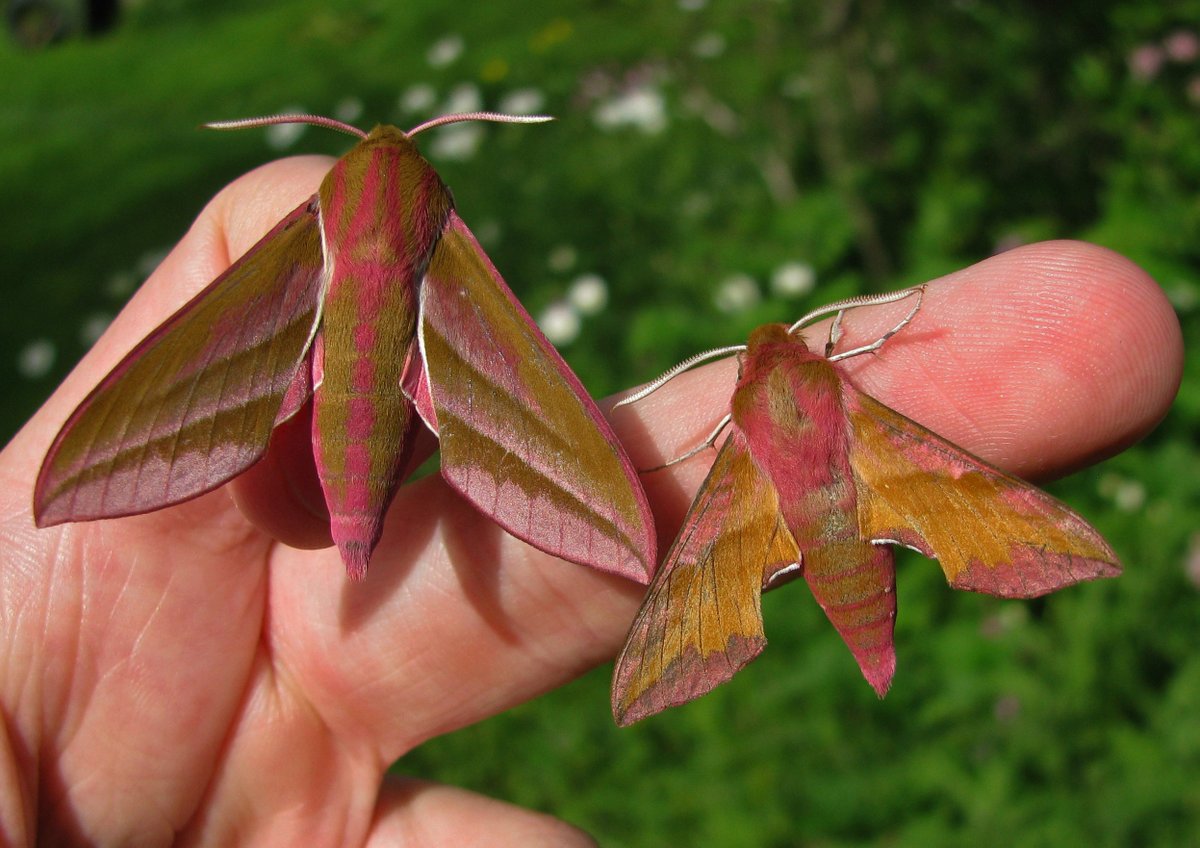In this thread, I’m going to tell you a bit about my PhD, which focuses on understanding the impacts of #LightPollution on moth populations  https://abs.twimg.com/emoji/v2/... draggable="false" alt="🌌" title="Milky Way" aria-label="Emoji: Milky Way">
https://abs.twimg.com/emoji/v2/... draggable="false" alt="🌌" title="Milky Way" aria-label="Emoji: Milky Way"> https://abs.twimg.com/emoji/v2/... draggable="false" alt="🌃" title="Night with stars" aria-label="Emoji: Night with stars">
https://abs.twimg.com/emoji/v2/... draggable="false" alt="🌃" title="Night with stars" aria-label="Emoji: Night with stars"> https://abs.twimg.com/emoji/v2/... draggable="false" alt="💡" title="Electric light bulb" aria-label="Emoji: Electric light bulb">
https://abs.twimg.com/emoji/v2/... draggable="false" alt="💡" title="Electric light bulb" aria-label="Emoji: Electric light bulb"> https://abs.twimg.com/emoji/v2/... draggable="false" alt="🐛" title="Bug" aria-label="Emoji: Bug">
https://abs.twimg.com/emoji/v2/... draggable="false" alt="🐛" title="Bug" aria-label="Emoji: Bug"> https://abs.twimg.com/emoji/v2/... draggable="false" alt="🦋" title="Butterfly" aria-label="Emoji: Butterfly">[1/11]
https://abs.twimg.com/emoji/v2/... draggable="false" alt="🦋" title="Butterfly" aria-label="Emoji: Butterfly">[1/11]
#WallingfordECRTweets @UK_CEH #MothsMatter
#WallingfordECRTweets @UK_CEH #MothsMatter
British moths are in decline, particularly in the south. The causes are poorly understood, though climate and land-use changes are thought to be important. However, there’s increasing concern that light pollution may play a role. [2/11]
Many places are undergoing rapid shifts in street lighting, with sodium lamps often being replaced by white LEDs.
The consequences are largely unknown, but it’s predicted that broader spectrum lighting has greater scope for ecological harm. [3/11]
The consequences are largely unknown, but it’s predicted that broader spectrum lighting has greater scope for ecological harm. [3/11]
Artificial light is known to have many disruptive impacts on moths, potentially acting across the entire life cycle (inc. documented effects on reproduction, larval development & pupal diapause); however, most studies have focused on the adult stage. [4/11]
To find suitable field sites, I used satellite imagery and council databases (each dot on left map is a street lamp: 137,708 in total!).
This gave me 153 possible sites, which I visited to determine which were actually suitable for my fieldwork (shown in second map). [5/11]
This gave me 153 possible sites, which I visited to determine which were actually suitable for my fieldwork (shown in second map). [5/11]
At these sites, I sampled caterpillars in lit and unlit areas, to see whether lighting has had long-term impacts on moth communities. This has involved sweeping grassy verges at night for nocturnal noctuid moth larvae… [6/11]
… and beating hedgerows for caterpillars, again comparing the communities from lit and unlit areas. This particular method can be extremely productive, e.g. these estimates from an unlit section of hawthorn hedge: [7/11] https://twitter.com/diarsia/status/1126877681734299648">https://twitter.com/diarsia/s...
This winter, I installed experimental lighting rigs in previously unlit field margins to test for short-term effects on the behaviour of nocturnal moth larvae. (Thanks @earth_trust & @BBOWT for providing access to their land!) [8/11]
These experiments have produced a number of interesting results on the short and long-term effects of lighting on moth communities. Unfortunately, I’m not able to share these publicly quite yet – watch this space! [9/11]
In the future, I’ll undertake DNA metabarcoding of c. 1,800 larvae to construct ecological networks from lit and unlit areas. I’ll also look at long-term datasets on UK moths to try to better understand whether light pollution has been a major driver of moth declines. [10/11]
I’d like to conclude by thanking my brilliant supervisors @mjopocock, @DarrenMarkEvans, @RichardFoxBC & Mark Parsons (also thanks to @Kitson_James) and my funders: @NERCscience, @IapetusDTP, @savebutterflies & @xercessociety.
Any questions, please get in touch! [11/11]
Any questions, please get in touch! [11/11]

 Read on Twitter
Read on Twitter https://abs.twimg.com/emoji/v2/... draggable="false" alt="🌃" title="Night with stars" aria-label="Emoji: Night with stars">https://abs.twimg.com/emoji/v2/... draggable="false" alt="💡" title="Electric light bulb" aria-label="Emoji: Electric light bulb">https://abs.twimg.com/emoji/v2/... draggable="false" alt="🐛" title="Bug" aria-label="Emoji: Bug">https://abs.twimg.com/emoji/v2/... draggable="false" alt="🦋" title="Butterfly" aria-label="Emoji: Butterfly">[1/11] #WallingfordECRTweets @UK_CEH #MothsMatter" title="In this thread, I’m going to tell you a bit about my PhD, which focuses on understanding the impacts of #LightPollution on moth populations https://abs.twimg.com/emoji/v2/... draggable="false" alt="🌌" title="Milky Way" aria-label="Emoji: Milky Way">https://abs.twimg.com/emoji/v2/... draggable="false" alt="🌃" title="Night with stars" aria-label="Emoji: Night with stars">https://abs.twimg.com/emoji/v2/... draggable="false" alt="💡" title="Electric light bulb" aria-label="Emoji: Electric light bulb">https://abs.twimg.com/emoji/v2/... draggable="false" alt="🐛" title="Bug" aria-label="Emoji: Bug">https://abs.twimg.com/emoji/v2/... draggable="false" alt="🦋" title="Butterfly" aria-label="Emoji: Butterfly">[1/11] #WallingfordECRTweets @UK_CEH #MothsMatter">
https://abs.twimg.com/emoji/v2/... draggable="false" alt="🌃" title="Night with stars" aria-label="Emoji: Night with stars">https://abs.twimg.com/emoji/v2/... draggable="false" alt="💡" title="Electric light bulb" aria-label="Emoji: Electric light bulb">https://abs.twimg.com/emoji/v2/... draggable="false" alt="🐛" title="Bug" aria-label="Emoji: Bug">https://abs.twimg.com/emoji/v2/... draggable="false" alt="🦋" title="Butterfly" aria-label="Emoji: Butterfly">[1/11] #WallingfordECRTweets @UK_CEH #MothsMatter" title="In this thread, I’m going to tell you a bit about my PhD, which focuses on understanding the impacts of #LightPollution on moth populations https://abs.twimg.com/emoji/v2/... draggable="false" alt="🌌" title="Milky Way" aria-label="Emoji: Milky Way">https://abs.twimg.com/emoji/v2/... draggable="false" alt="🌃" title="Night with stars" aria-label="Emoji: Night with stars">https://abs.twimg.com/emoji/v2/... draggable="false" alt="💡" title="Electric light bulb" aria-label="Emoji: Electric light bulb">https://abs.twimg.com/emoji/v2/... draggable="false" alt="🐛" title="Bug" aria-label="Emoji: Bug">https://abs.twimg.com/emoji/v2/... draggable="false" alt="🦋" title="Butterfly" aria-label="Emoji: Butterfly">[1/11] #WallingfordECRTweets @UK_CEH #MothsMatter">
 https://abs.twimg.com/emoji/v2/... draggable="false" alt="🌃" title="Night with stars" aria-label="Emoji: Night with stars">https://abs.twimg.com/emoji/v2/... draggable="false" alt="💡" title="Electric light bulb" aria-label="Emoji: Electric light bulb">https://abs.twimg.com/emoji/v2/... draggable="false" alt="🐛" title="Bug" aria-label="Emoji: Bug">https://abs.twimg.com/emoji/v2/... draggable="false" alt="🦋" title="Butterfly" aria-label="Emoji: Butterfly">[1/11] #WallingfordECRTweets @UK_CEH #MothsMatter" title="In this thread, I’m going to tell you a bit about my PhD, which focuses on understanding the impacts of #LightPollution on moth populations https://abs.twimg.com/emoji/v2/... draggable="false" alt="🌌" title="Milky Way" aria-label="Emoji: Milky Way">https://abs.twimg.com/emoji/v2/... draggable="false" alt="🌃" title="Night with stars" aria-label="Emoji: Night with stars">https://abs.twimg.com/emoji/v2/... draggable="false" alt="💡" title="Electric light bulb" aria-label="Emoji: Electric light bulb">https://abs.twimg.com/emoji/v2/... draggable="false" alt="🐛" title="Bug" aria-label="Emoji: Bug">https://abs.twimg.com/emoji/v2/... draggable="false" alt="🦋" title="Butterfly" aria-label="Emoji: Butterfly">[1/11] #WallingfordECRTweets @UK_CEH #MothsMatter">
https://abs.twimg.com/emoji/v2/... draggable="false" alt="🌃" title="Night with stars" aria-label="Emoji: Night with stars">https://abs.twimg.com/emoji/v2/... draggable="false" alt="💡" title="Electric light bulb" aria-label="Emoji: Electric light bulb">https://abs.twimg.com/emoji/v2/... draggable="false" alt="🐛" title="Bug" aria-label="Emoji: Bug">https://abs.twimg.com/emoji/v2/... draggable="false" alt="🦋" title="Butterfly" aria-label="Emoji: Butterfly">[1/11] #WallingfordECRTweets @UK_CEH #MothsMatter" title="In this thread, I’m going to tell you a bit about my PhD, which focuses on understanding the impacts of #LightPollution on moth populations https://abs.twimg.com/emoji/v2/... draggable="false" alt="🌌" title="Milky Way" aria-label="Emoji: Milky Way">https://abs.twimg.com/emoji/v2/... draggable="false" alt="🌃" title="Night with stars" aria-label="Emoji: Night with stars">https://abs.twimg.com/emoji/v2/... draggable="false" alt="💡" title="Electric light bulb" aria-label="Emoji: Electric light bulb">https://abs.twimg.com/emoji/v2/... draggable="false" alt="🐛" title="Bug" aria-label="Emoji: Bug">https://abs.twimg.com/emoji/v2/... draggable="false" alt="🦋" title="Butterfly" aria-label="Emoji: Butterfly">[1/11] #WallingfordECRTweets @UK_CEH #MothsMatter">
![British moths are in decline, particularly in the south. The causes are poorly understood, though climate and land-use changes are thought to be important. However, there’s increasing concern that light pollution may play a role. [2/11] British moths are in decline, particularly in the south. The causes are poorly understood, though climate and land-use changes are thought to be important. However, there’s increasing concern that light pollution may play a role. [2/11]](https://pbs.twimg.com/media/EUsAeWBXsAAR5b2.jpg)
![Many places are undergoing rapid shifts in street lighting, with sodium lamps often being replaced by white LEDs.The consequences are largely unknown, but it’s predicted that broader spectrum lighting has greater scope for ecological harm. [3/11] Many places are undergoing rapid shifts in street lighting, with sodium lamps often being replaced by white LEDs.The consequences are largely unknown, but it’s predicted that broader spectrum lighting has greater scope for ecological harm. [3/11]](https://pbs.twimg.com/media/EUsAuxwWAAEXuzV.jpg)
![Artificial light is known to have many disruptive impacts on moths, potentially acting across the entire life cycle (inc. documented effects on reproduction, larval development & pupal diapause); however, most studies have focused on the adult stage. [4/11] Artificial light is known to have many disruptive impacts on moths, potentially acting across the entire life cycle (inc. documented effects on reproduction, larval development & pupal diapause); however, most studies have focused on the adult stage. [4/11]](https://pbs.twimg.com/media/EUsA3FdXgAUUJGa.jpg)
![To find suitable field sites, I used satellite imagery and council databases (each dot on left map is a street lamp: 137,708 in total!). This gave me 153 possible sites, which I visited to determine which were actually suitable for my fieldwork (shown in second map). [5/11] To find suitable field sites, I used satellite imagery and council databases (each dot on left map is a street lamp: 137,708 in total!). This gave me 153 possible sites, which I visited to determine which were actually suitable for my fieldwork (shown in second map). [5/11]](https://pbs.twimg.com/media/EUsBLbwXsAUMTdE.jpg)
![To find suitable field sites, I used satellite imagery and council databases (each dot on left map is a street lamp: 137,708 in total!). This gave me 153 possible sites, which I visited to determine which were actually suitable for my fieldwork (shown in second map). [5/11] To find suitable field sites, I used satellite imagery and council databases (each dot on left map is a street lamp: 137,708 in total!). This gave me 153 possible sites, which I visited to determine which were actually suitable for my fieldwork (shown in second map). [5/11]](https://pbs.twimg.com/media/EUsBMRlX0AMXj4v.jpg)
![At these sites, I sampled caterpillars in lit and unlit areas, to see whether lighting has had long-term impacts on moth communities. This has involved sweeping grassy verges at night for nocturnal noctuid moth larvae… [6/11] At these sites, I sampled caterpillars in lit and unlit areas, to see whether lighting has had long-term impacts on moth communities. This has involved sweeping grassy verges at night for nocturnal noctuid moth larvae… [6/11]](https://pbs.twimg.com/media/EUsBgI8WoAA-fnC.jpg)
![At these sites, I sampled caterpillars in lit and unlit areas, to see whether lighting has had long-term impacts on moth communities. This has involved sweeping grassy verges at night for nocturnal noctuid moth larvae… [6/11] At these sites, I sampled caterpillars in lit and unlit areas, to see whether lighting has had long-term impacts on moth communities. This has involved sweeping grassy verges at night for nocturnal noctuid moth larvae… [6/11]](https://pbs.twimg.com/media/EUsBhtvXkAEbUA3.jpg)
![This winter, I installed experimental lighting rigs in previously unlit field margins to test for short-term effects on the behaviour of nocturnal moth larvae. (Thanks @earth_trust & @BBOWT for providing access to their land!) [8/11] This winter, I installed experimental lighting rigs in previously unlit field margins to test for short-term effects on the behaviour of nocturnal moth larvae. (Thanks @earth_trust & @BBOWT for providing access to their land!) [8/11]](https://pbs.twimg.com/media/EUsCAn0WAAUOxPo.jpg)
![This winter, I installed experimental lighting rigs in previously unlit field margins to test for short-term effects on the behaviour of nocturnal moth larvae. (Thanks @earth_trust & @BBOWT for providing access to their land!) [8/11] This winter, I installed experimental lighting rigs in previously unlit field margins to test for short-term effects on the behaviour of nocturnal moth larvae. (Thanks @earth_trust & @BBOWT for providing access to their land!) [8/11]](https://pbs.twimg.com/media/EUsCCKvXsAMRR1f.jpg)
![I’d like to conclude by thanking my brilliant supervisors @mjopocock, @DarrenMarkEvans, @RichardFoxBC & Mark Parsons (also thanks to @Kitson_James) and my funders: @NERCscience, @IapetusDTP, @savebutterflies & @xercessociety. Any questions, please get in touch! [11/11] I’d like to conclude by thanking my brilliant supervisors @mjopocock, @DarrenMarkEvans, @RichardFoxBC & Mark Parsons (also thanks to @Kitson_James) and my funders: @NERCscience, @IapetusDTP, @savebutterflies & @xercessociety. Any questions, please get in touch! [11/11]](https://pbs.twimg.com/media/EUsCwOgXYAEErHa.jpg)


